Popular on Food52
6 Comments
Matt L.
August 6, 2014
It's also a great way to cut and cook things like sweetheart cabbage. If you pick into leaves and then remove the stems and roll and slice exactly like above you get a thin shredded cabbage which cooks quickly. Delicious paired with sweetcorn kernels which cook in the same amount of time in a little butter (minutes). www.timedeating.co.uk/olive-oil-crushed-potatoes
Pegeen
August 5, 2014
I read somewhere that using scissors instead of a knife causes less browning. I haven't tested it, though!
Susan W.
August 5, 2014
I have been using my scissors for basil and mint for a couple of years now and when my herbs end up sitting longer than I planned, I see no browning. Not sure why. They are very sharp, but so are my knives.
fitzie
August 5, 2014
If you roll the basil the other direction (from stem to tip of leaf), you will have cleaner cuts and the edges won't brown as fast.
Matt L.
August 6, 2014
However, if you roll that way you will end up with a strip which has the stem of the basil in it and is chewy rather than little bits of stem ini each cut which is not noticeable
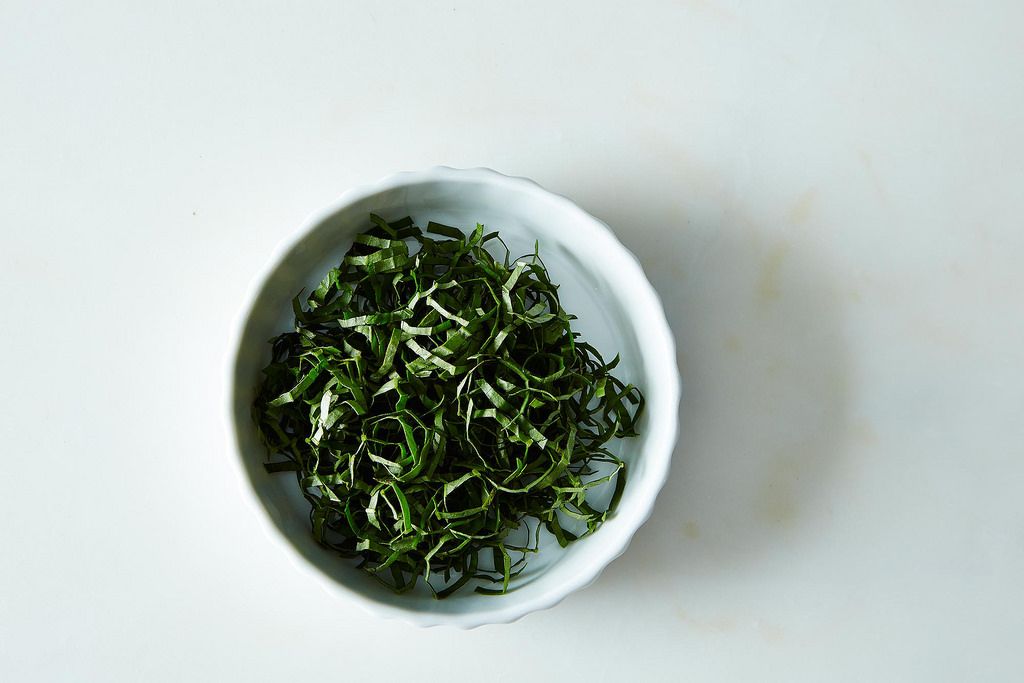
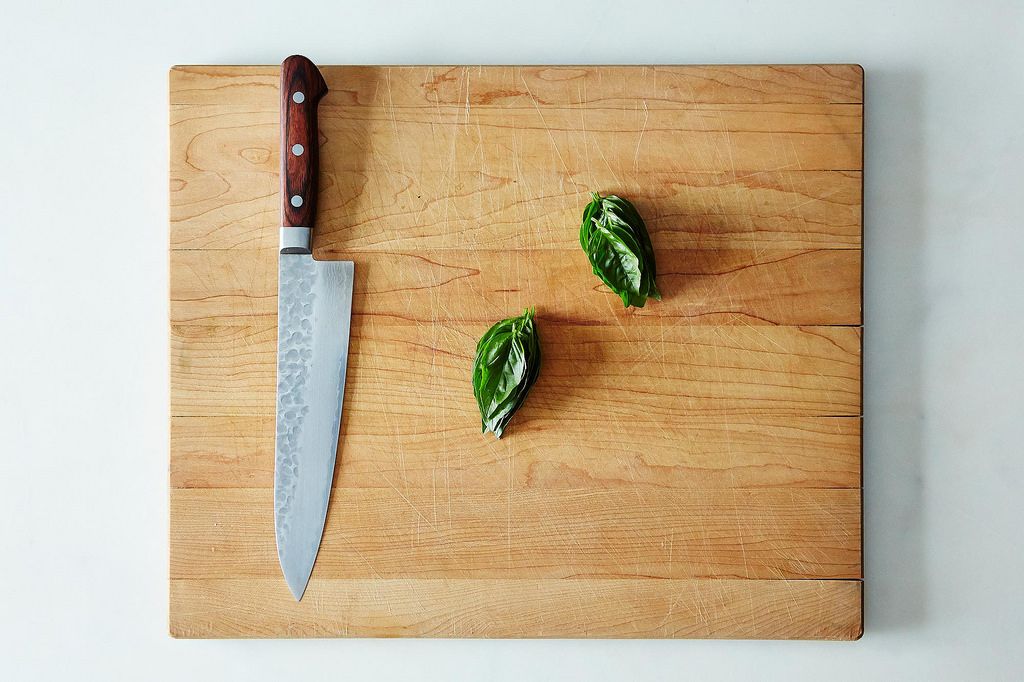
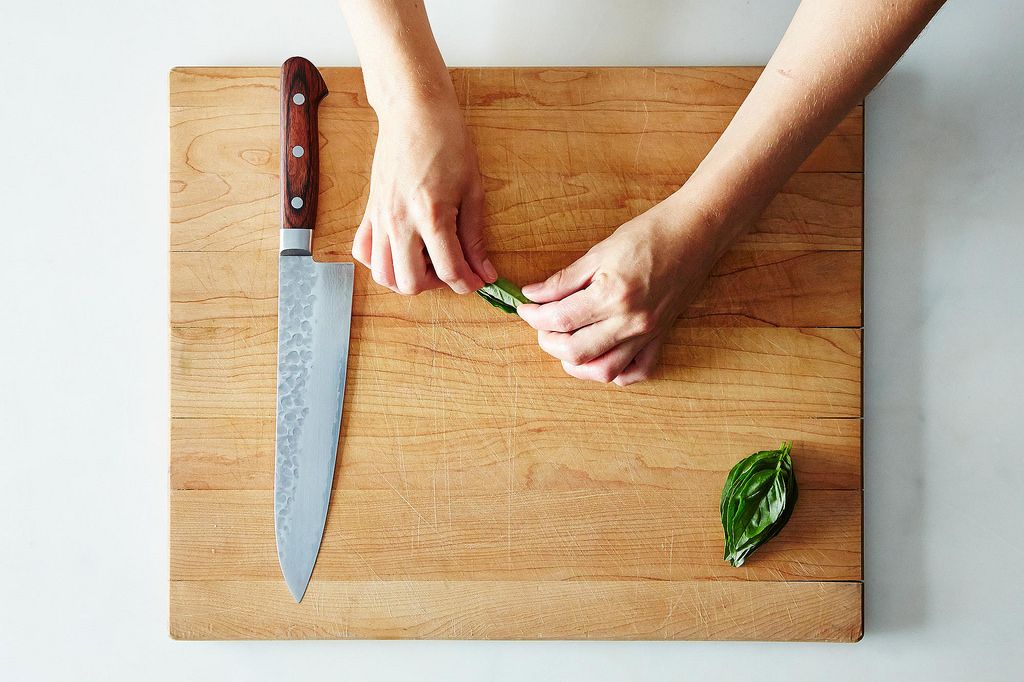
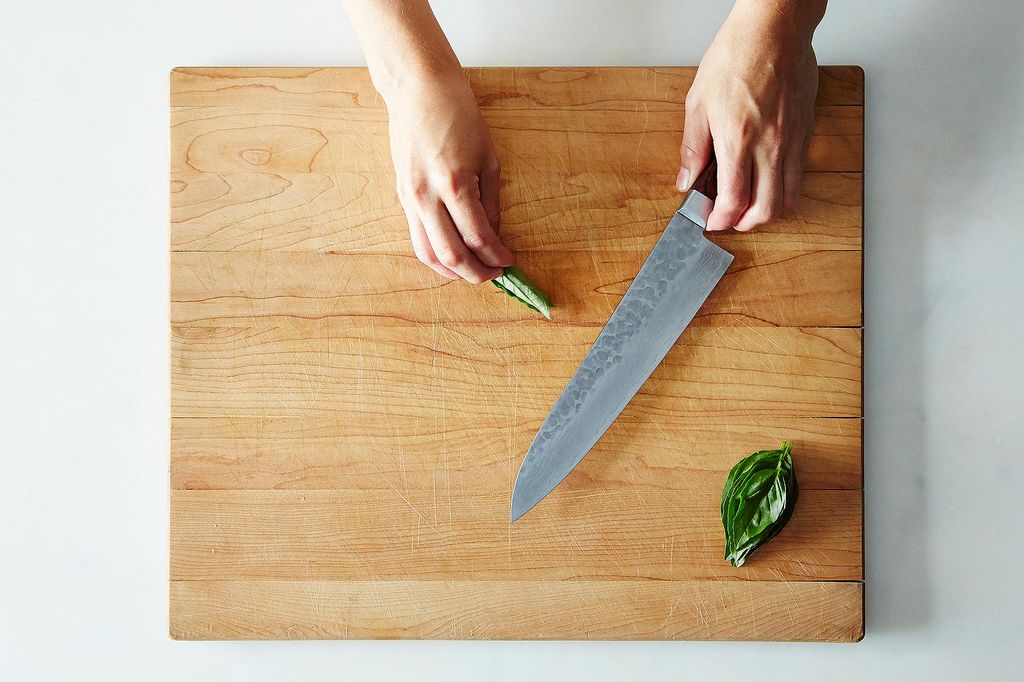
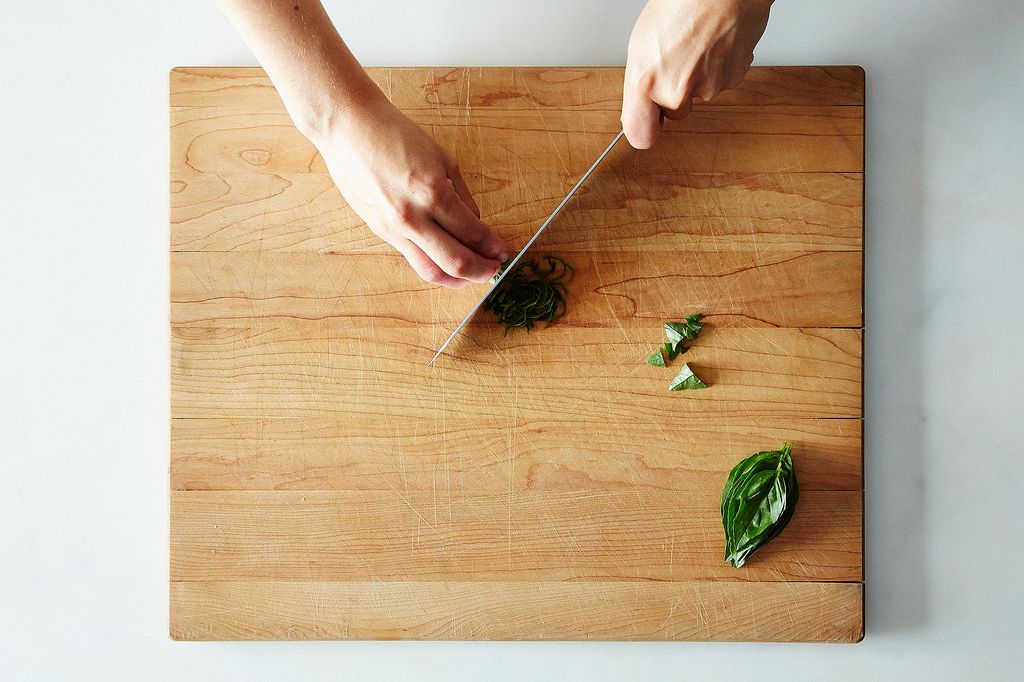
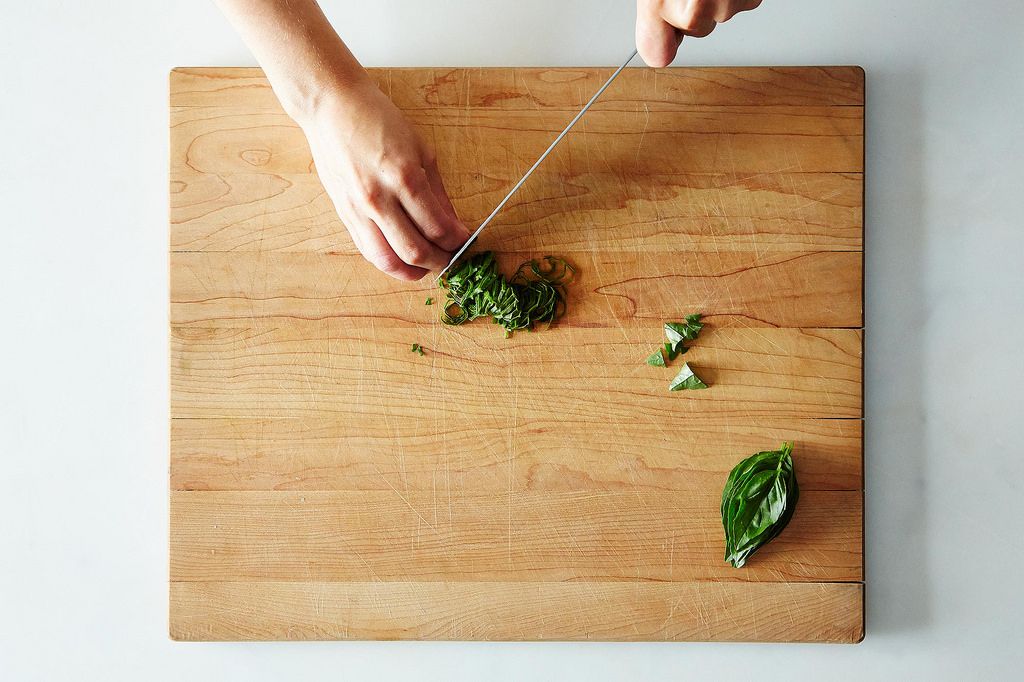


See what other Food52 readers are saying.